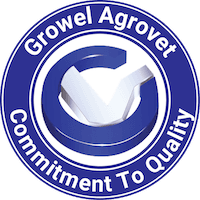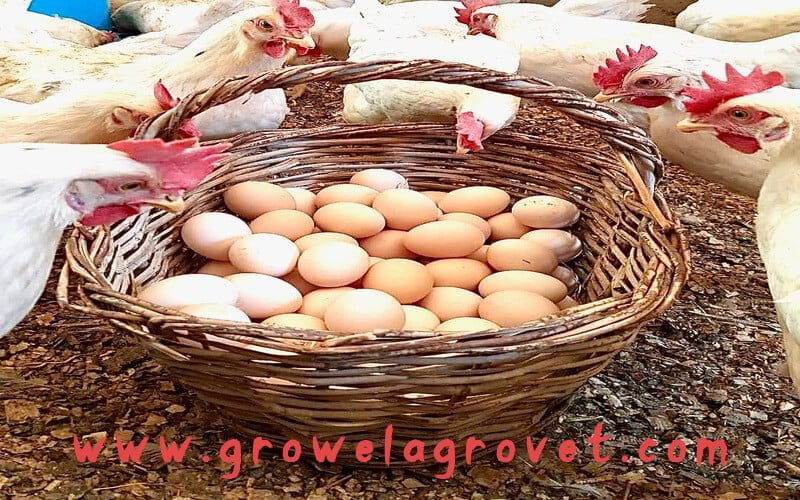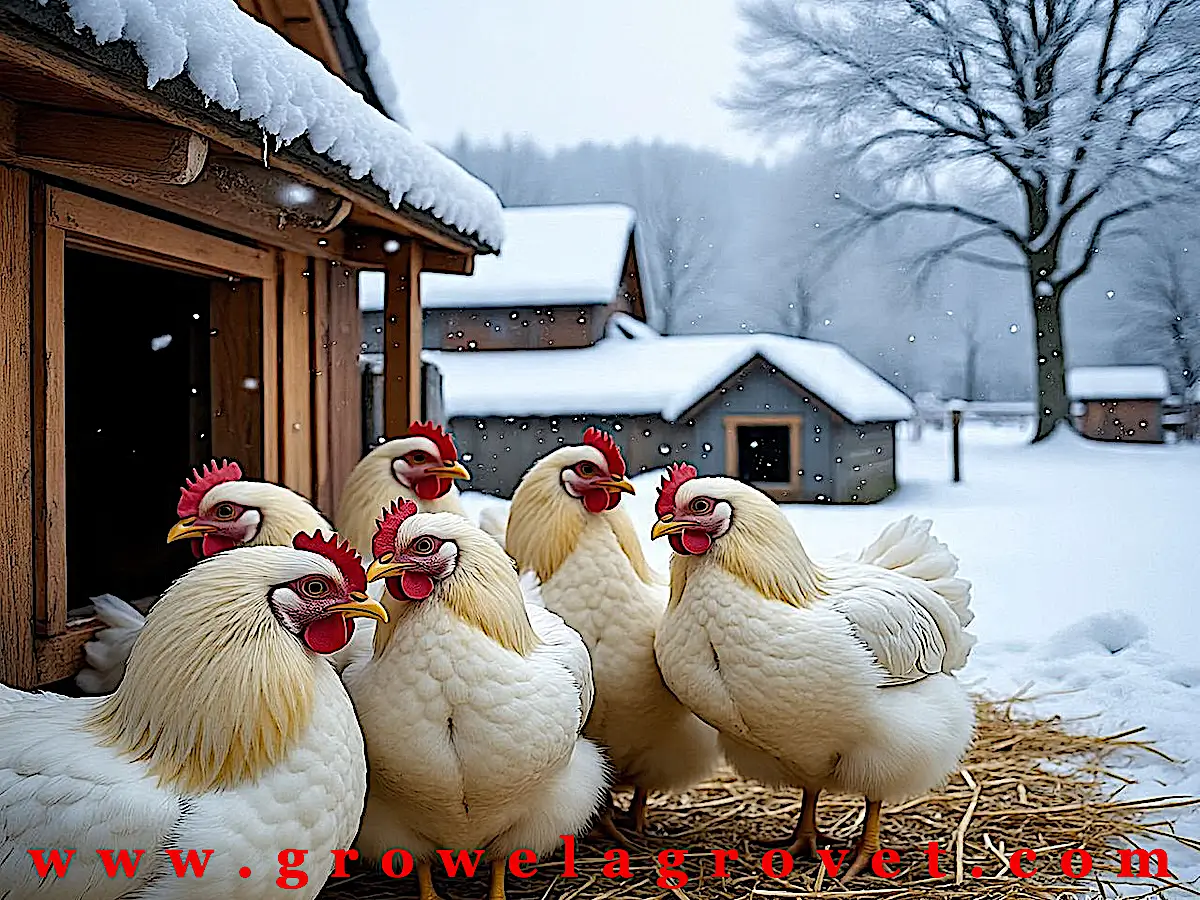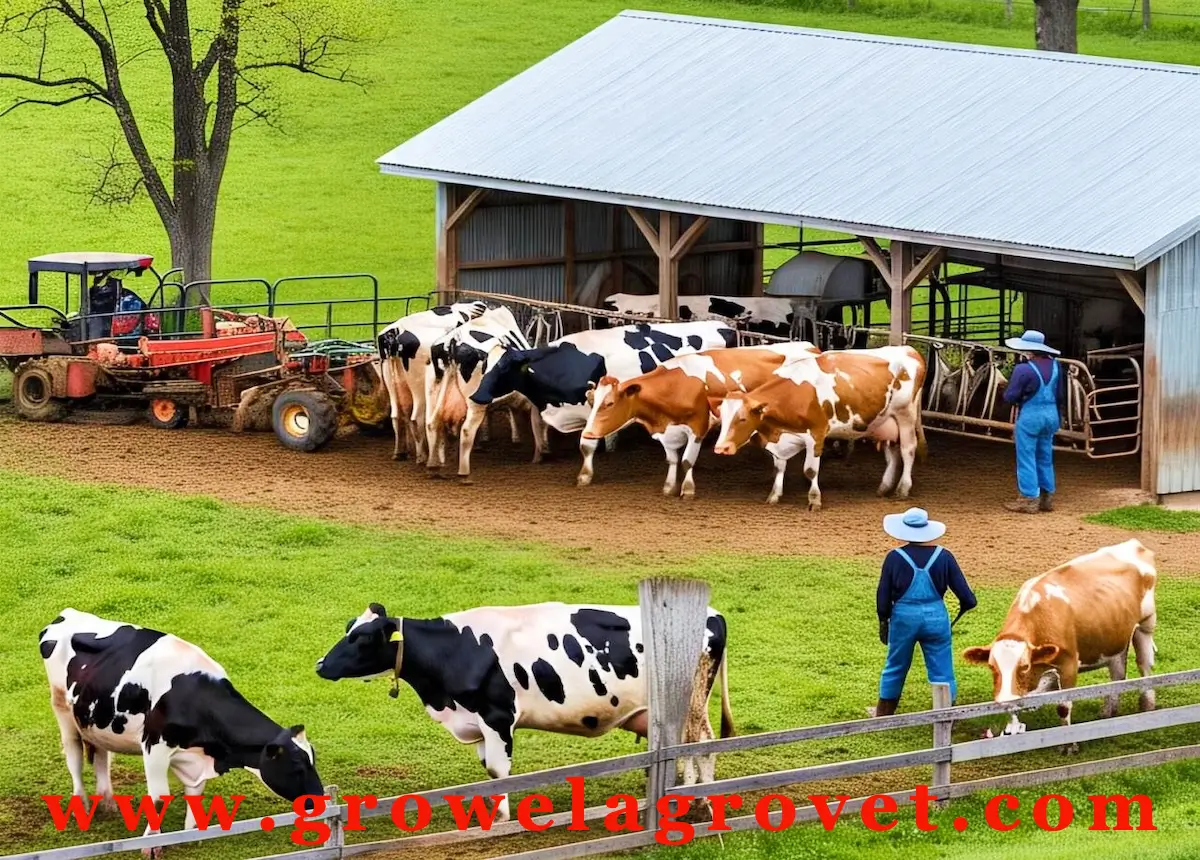Layer poultry farming means raising egg-laying poultry birds for commercial egg production. Layer chickens are a particular species of hens that need to be raised from one day old, and they start laying eggs commercially from 18-19 weeks of age. They remain to lay eggs continuously till 72-78 weeks of age. They can produce about one kg of eggs by consuming about 2.25 kg of food during their egg-laying period. To produce hybrid eggs layer, consider the various characteristics of cock and hen before breeding. Different types of highly egg-productive layer breeds are available worldwide. We have also compiled the Layer Poultry Farming Project PDF from this article under our website’s free veterinary books section.
Layer Breeds:
Layer hens are of two types, according to the nature and colour of the egg. A short description of these two types is listed below.
- White Egg Laying Hens: This type of hen is comparatively smaller. Relatively eat less food, and the colour of an eggshell is white. Isa White, Lehman White, Nikchik, Bab Cock BV-300, Havard White, Hi Sex White, Sever White, Hi line White, Bovanch White etc., are some famous white egg-laying chickens.
- Brown Egg Laying Hens: Brown egg-laying hens are relatively larger. They eat more foods than white egg layers and bigger eggs than other laying breeds. The eggshell is brown-coloured. There are many types of brown layers available. Among those, Isa Brown, Hi Sex Brown, Sever 579, Lehman Brown, Hi Line Brown, Bab Cock BV-380, Gold Line, Bablona Tetro, Bablona Harko, Havard Brown etc. are very suitable for commercial layer poultry farming.
Layer Hen Selection:
Remember some essential information before selecting the layer hens for your poultry farming business. First, you must choose breeds that are suitable for your layer poultry farming business and can produce well in your area. Then, read below to select the appropriate species for your business.
- For commercial egg production, you must choose highly productive laying hens correctly.
- All types of hens do not produce an equal number of eggs.
- The chosen breeds must have to have good production capability.
- If your chosen breed contains the desired characteristics and has a reputation for egg production, that breed is suitable for your business.
- Always purchase healthy chicks from a famous and popular hatchery. You can see their reputation in your area before purchasing.
Keeping Chicks for Layer Poultry Farming:
During the first weeks after birth, many chicks do not want to drink the water due to transporting them from one place to another. So you must make adequate water drinking systems in their brooder house and train them to drink water. Mix Electral Energy with water so that they can quickly get energy. Please provide them with high-quality multivitamins, ie. Growvit Power by mixing with water. Multivitamins and electrolytes are very effective when transporting chick from a long distance. It reduces tiredness and lack of water and helps to make the chick normal. You must follow the Layer Poultry Medicine Schedule for the best production and the highest profit.
Vaccination and its Importance for Layer Poultry Farming:
The vaccination program is necessary for chicks to free them from all diseases. The main advantage of poultry vaccination is listed below.
- Timely vaccination makes disease resistance power in the body of a chick.
- Help keep the hen free from infectious poultry diseases.
- Disease prevalence will be less.
- The mortality rate will be reduced.
- A low mortality rate = more production = more profit.
There are many types of poultry vaccines available for layer hens. Marex, Ranikhet, Gamboro, Bruchaities, Bosonto, Salmonella, etc., are used for layer chickens.
Before Vaccination of Layer Poultry:
You have to maintain some rules before vaccination.
- Hold the chickens very carefully.
- Vaccinate the chickens without any strain.
- There is no need to vaccinate the ill hen.
- Wash the vaccination equipment with a water solution of Viraclean
- Do the vaccination program in cold weather conditions.
- A preventive vaccine is always applicable to a healthy bird. Never vaccinate an infected bird.
Keeping Growing Chicks:
You have to follow the suggestion listed below to keep growing layer chickens.
- You must provide the growing chicks special care until they reach 4-5 weeks.
- After brooding, serve them good quality pellet feed. The high-quality pellets will make the chickens healthy and increase their body weight.
- So, providing them with quality pellet feed during growth is essential.
- You must follow the Layer Poultry Medicine Chart. This chart will be beneficial regarding FCR, least or no mortality, disease resistance, and more and the best quality of eggs.
Egg Production for Layer Poultry Farming:
Egg production from a Layer Poultry Farming depends on care and farm management. If you take good care of your birds and manage them properly, the production and profit will be high.
- Within the first 20 weeks of age, about 5% of hens start laying eggs.
- About 10% of birds start laying at 21 weeks of age.
- When they reach 26 to 30 weeks of age, they produce highly. Although, it may be different depending on their strain.
- After laying a maximum number of eggs, they usually stop laying for a few days.
- After this period, their egg production might reduce slowly.
- The egg-laying rate and size of eggs increase gradually.
- The hens grow till 40 weeks of age.
- The weight and size of eggs increase till 50 weeks of age.
Method and Importance of Lip Cutting:
Cutting the lip of laying hens is very important. The main benefits are listed below.
- Lip cutting helps to reduce mutual fights.
- It helps to prevent food waste.
- You have to cut your chick’s lip at 8 to 10 days.
- Cut the lip of growing chicken at 8 to 12 weeks of age.
- Cut the lip of chicks 0.2 cm from their nose.
- Cut 0.45 cm in case of growing chickens.
- Cut both upper and lower lips.
- Don’t cut both lips together. Cut one after another.
- Use a block chick trimming machine to cut the lips.
Don’t cut their lip two days after or before vaccination or after or before using some medicines like sulfur. Also, don’t cut the lip if the hen is in a strain, during adverse weather conditions, or if the hen starts laying eggs.
Serve the chicken water mixed with vitamin “K” three days before cutting lips. Wash the lip-cutting instrument with Viraclean. Test the edge and temperature of the blade. You have to be careful and not damage their eyes and tongue. Choose cold weather for cutting their lips. An experienced technician should observe the lip-cutting process. After cutting the lips, serve them water in a deep pot. Please provide them with some extra energy-enriched feed.
Feeding for Layer Poultry Farming:
There are many companies available throughout the world that produce commercial feed and feed supplements for layer chickens. You can buy feed from your local market or make the feed at your own house after blending Growel Premixes. You must ensure that the feed and premixes you bought are enriched with essential food value.
Protein, Vitamins and minerals are essential for laying hens, which affect the quality of eggs, layer poultry fertility and layer bird health.
- Provide Layer Poultry Supplements Schedule
- If you notice they are not gaining the expected weight, you must serve starter feed for eight weeks.
- Serve feed two or three times a day till they are 18 weeks of age.
- The demand for feed increases very fast when the birds start laying.
- Serve them a layer of poultry feed according to their age and weight.
- Don’t decrease the amount of feed while laying (even if their weight increase).
Water Management for Layer Poultry Farming:
Layer Chicken’s health depends on the supply of pure, clean and fresh drinking water. You have to provide adequate water according to the demands of your laying hens. For purifying the water, mix Aquacure. Determine a suitable place to keep the water pot inside the poultry house. Supply cold water during the summer and hot weather and slightly hot water in cold weather or winter.
The chickens’ age and species and the food provided can control the chickens’ weights. Use sufficient calcium, phosphorus, vitamins, amino acids and other mineral substances in their food. If you follow the abovementioned methods, you can profit better from your layer poultry farming business.
Layer Farm Sequence:
A standard procedure is followed for the Layer Farm Sequence. This procedure starts when female chicks are raised into pullets for commercial egg production. This stage is called ‘rearing’; several standard rearing systems exist. For example, some farms grow layer chicks on a litter floor in a shed, similar to a meat chicken shed. Other pullets are either finished off or reared entirely in wire-floored cages.
Brooding for Layer Poultry Farming:(Day-old to 6 weeks):
She is said to be broody’ when a hen usually sits still for a prolonged period without eating or drinking. This is a normal process during which the hen stops producing eggs to incubate a nest full of eggs. When the eggs hatch, the hen cares for the chicks by keeping them warm and finding feed and water. Modern chicken strains have been selected not to go broody so that more eggs are laid over time.
When rearing chicks commercially, the aim is to do the same thing as the hen. The stage of life when chicks need some additional heat is the brooding stage. It lasts up to six weeks, depending on the environment’s temperature, until the chicks can control their body temperature. From day one, they usually receive chick starter feed, which ensures they have plenty of protein (19%) and energy for body growth.
Growing Layer Birds (6 to 20 weeks):
Once chicks can control their body temperature, they must remain protected from climate extremes. At this stage, they receive pullet grower feed, which is less expensive and contains only 15% to 17% protein and 7% less energy than the starter feed.
Beak trimming and some vaccinations are done during the grower stage to prepare the birds for their adult life as laying hens. Anything that limits growth at this time can affect their ability to apply well. However, excessive feeding at this time can be harmful, again leading to poor production.
Restriction to feed supply to birds during growing stops them from growing fast, resulting in both feed savings and increased egg production when the birds mature. Careful weekly weighing of the birds is essential to restrict body weight and work out how even the flock is growing. Breeding companies recommend what weight birds should be at each age.
Moving the Layer Birds:
Pullets are usually moved into their laying quarters at 16-18 weeks before they reach sexual maturity. This ensures that they are settled in before egg production begins. Handling birds at any time must be done with care to avoid injury. As pullets mature into laying hens, they are fed layer feeds designed to enable them to perform best.
Adult Layer Birds (20 to/up to 78 weeks):
Adult hens are the real workers of the industry. They must be fed carefully and kept in a house at 21-28oC for best performance. This means that hen houses are designed to keep as near as possible to this temperature year round. The hens are checked regularly to monitor their health, and medicines may be administered as needed. Tinted egg strains usually require less feed (105g feed/hen/day) than brown egg strains (120g feed/hen/day).
The quality of feed provided to hens may vary for the production level. Hens need more nutrients before and during their peak production than at other times. This is called phase feeding. Therefore, it can be economical to adjust rations for such high-demand periods.
Egg Collecting and Grading:
Automated collection of eggs is common in modern layer farms. It takes about 26 hours for each egg to develop, and each hen lays an egg a little later each day. This is not exact; most eggs are laid in the morning. Eggs should be collected regularly, transferred from the hen house to an egg room, and graded or checked for weight and damaged shells. A sample of eggs is often broken open to check internal quality. Eggs are packed into cartons for 12 eggs or trays of 30 eggs for sale. Prices vary with egg size, so eggs must be separated based on weight. This is done automatically by a machine called an egg grader.
Marketing of Eggs:
Eggs are stored in a cool room at about 13oC and transported in an insulated truck. Unfortunately, many shops selling eggs do not keep them under ideal conditions. It is best to store them at average refrigerator temperature (4-6oC) in the home and shop. Marketing involves a range of prices, depending on the different sizes of eggs, different brands, or other differences that attract particular buyers. Free-range and fat-modified eggs are among the varieties available. It would help if you also read the Layer Poultry Medicine Schedule Chart.
If you’re a layer poultry farmer and want to profit more, you can buy high-quality medication for your birds online. This medication is top-of-the-line and can help increase your farm’s profitability.






